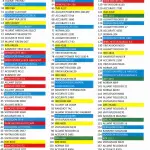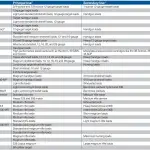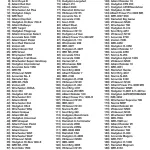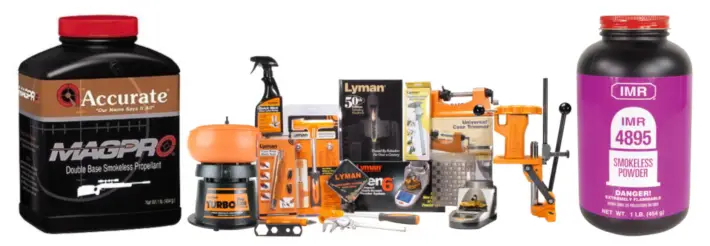There are many different types of reloading powder available on the market, so how do you know which one is right for you? In this article, we will discuss how to choose the right reloading powder for your needs. First, you need to decide what type of ammunition you will be reloading. Rifle, pistol, and shotgun powders all have different purposes. For example, rifle powders are designed for high-pressure loads, while pistol powders are designed for lower-pressure loads. Once you have decided what type of ammunition you will be reloading, you can narrow your choices down by looking at the burn rate. The burn rate is the speed at which the powder burns.
When reloading ammunition, one of the most important elements is choosing the right type of gunpowder. There are many different types of powders, and each one has specific properties that make it suitable for different applications. Choosing the best powder for your purposes can be a difficult and confusing task, but this article aims to give you all the information you need to choose the right one.
If you are looking for reloading equipment, please see our related posts:
- Top 7 Best Reloading Kits for Beginners
- Top 7 Best Case Prep Centers
- Top 11+ Best Powder Scales For Reloading
- Top 9+ Best Reloading Benches for the Money
- 7+ Best Single Stage Reloading Presses
Background Information to Choose the Right Reloading Powder:
What is Reloading Powder?
As you are considering how to choose reloading powder, we’ll take a step to explain more about what it is. Reloading powder is a type of propellant used in firearms and ammunition. It is used to reload spent cartridges or shells with new rounds of ammunition. There are many different types of reloading powders available on the market, each with its own unique characteristics. You may have heard of black powder; however, it is different from smokeless powder. Learn how to select the type that’s best for your firearms and shooting needs.
How Does Reloading Powder Work?
What is the Difference Between Black Powder and Smokeless Powder?
- Density – Black powder has a higher density than smokeless powder, making it heavier and slower to burn.
- Hardness – Smokeless powder is harder than black powder, making it more difficult to mold and cast.
- Flash point – The flash point of black powder is lower than smokeless powder, making it safer to work with.
- Smoke – Although both produce smoke, black powder produces a thicker, whiter smoke.
- Temperature – The burning temperature of black powder is higher than smokeless powder.
Black powder and smokeless powder are two types of propellant used in firearms and other applications. Black powder is a traditional type of powder that has been used for centuries, while smokeless powder is a more modern type of powder that was developed in the late 19th century.
One of the main differences between black powder and smokeless powder is their composition. Black powder is made from a mixture of potassium nitrate, charcoal, and sulfur, while smokeless powder is typically made from nitrocellulose or other nitrated organic compounds.
Another key difference between the two types of powder is their burn rate. Black powder has a relatively slow burn rate, which can produce a large amount of smoke and other byproducts when it is ignited. Smokeless powder, on the other hand, has a faster burn rate and produces much less smoke when it is ignited.
Black powder and smokeless powder also have different characteristics when it comes to their performance in firearms. Black powder can be more difficult to load and ignite than smokeless powder, and it can be less accurate and consistent in its performance. Smokeless powder, on the other hand, is easier to load and ignite, and it can provide more consistent and accurate performance in firearms.
Black powder and smokeless powder are two different types of propellant that have their own unique characteristics and are best suited for different applications. Black powder is a traditional type of powder that has been used for centuries, while smokeless powder is a more modern type of powder that offers improved performance and reduced smoke production.
Choosing the Right Burn Rate of Reloading Powder
- From Winchester Smokeless Propellants, they produced a PDF with a list of 163 different gun powders, sorted by burn rate.
-

Relative burn rates from fastest to slowest
-
- Alliant Powders produced this reloader’s guide that includes data for each of their powders with recommended uses. Additionally, there is a lot of generally helpful information about the properties, safe handling, and storage of smokeless powder.
-

Chart of different burning rates of gunpowders
-
- Burn Rates of 197 different gunpowders from LoadData.com

Burn Rates of 197 different gunpowders
Choosing the Right Shape of Reloading Powder
There are several different shapes of reloading powder available on the market, and each has its own unique characteristics. The characteristics of different shapes of reloading powder can vary depending on the specific type of powder. However, there are some general characteristics that are common to many types of powders. For example:
- Flattened spheres: These powders have a spherical shape that has been flattened, giving them a disk-like appearance. They tend to have a slower burn rate than other shapes, which makes them well-suited for applications where a slow, controlled burn is desired.
- Cylinders: These powders have a cylindrical shape, with a uniform diameter and length. They tend to have a slower burn rate than other shapes, which makes them well-suited for applications where a slow, controlled burn is desired.
- Ball powders: These powders have a spherical shape, similar to a ball bearing. They tend to have a faster burn rate than other shapes, which makes them well-suited for applications where a fast, high-pressure burn is desired.
- Extruded powders: These powders have a rectangular or oblong shape, with a uniform cross-section and length. They tend to have a slower burn rate than other shapes, which makes them well-suited for applications where a slow, controlled burn is desired.
- Flakes: These powders have a flake-like shape, with a flat, irregular appearance. They tend to have a slower burn rate than other shapes, which makes them well-suited for applications where a slow, controlled burn is desired.
- Sticks: These powders have a stick-like shape, with a long, cylindrical appearance. They tend to have a faster burn rate than other shapes, which makes them well-suited for applications where a fast, high-pressure burn is desired.
- Spheres: These powders have a spherical shape, similar to a ball. Their burn rate can vary depending on the specific type of powder.
- Cylinder-spheres: These powders have a shape that is a combination of a cylinder and a sphere, with a cylindrical core and a spherical outer layer. Their burn rate can vary depending on the specific type of powder.
Each type of powder has its own specific characteristics, such as burn rate, density, and size. It’s important to choose the right shape of powder for your specific needs, as using the wrong shape can affect the performance of your ammunition. Consult a reloading manual or speak with a knowledgeable person at a gun shop for guidance on which powders are suitable for your specific needs.
Ball Powder
Ball powder is best for handgun and shotgun ammunition. It is also the cleanest burning powder available, which means less residue in your gun and less fouling of the barrel. This makes it easier to keep your gun clean and shooting accurately. Additionally, ball powder provides more consistent results, meaning your shots will be more accurate. I can’t say it better than this!
Ball propellant (trademarked as Ball Powder by Olin Corporation and marketed as spherical powder by Hodgdon Powder Company) is a form of nitrocellulose used in small arms cartridges. Ball propellant can be manufactured more rapidly with greater safety and less expense than extruded propellants. Ball propellant was first used to load military small arms cartridges during World War II and has been manufactured for sale to handloading civilians since 1960. https://en.wikipedia.org/wiki/Ball_propellant
Flattened Ball Powder
Flake Powder
Stick Powder
Choosing the Right Powder Density of Reloading Powder
- The density of a powder will determine how much room it takes up in the casing compared to propellants of other densities.
- Powder types with higher densities will provide more power in a smaller space.
- The denser the powder, the less of it is needed to achieve the same performance.
- Due to the primers’ need to fire into the powder, the recommended maximum density for reloaders is 95%.
- Below 80% is not recommended because the powder will burn at too slow a rate to provide maximal pressure throughout the process before the bullet departs the barrel.
- The shape of the grains (explained above) impacts the density and performance of the propellant.
Understanding Single, Double, and Triple Base Powders
Single-base, double-base, and triple-base refer to the types of chemicals that are used to make a particular reloading powder. Single-base powders are made from a single chemical, typically nitrocellulose, which is the same chemical used to make gunpowder. Double-base powders are made from a combination of two chemicals, typically nitrocellulose and nitroglycerin. Triple-base powders are made from a combination of three chemicals, typically nitrocellulose, nitroglycerin, and nitroguanidine.
Single-Base Powders
Single-base powders are made from a single chemical, typically nitrocellulose.
Some advantages of single-base powders include:
- They tend to have a slower burn rate than double-base and triple-base powders, which can be beneficial in applications where a slow, controlled burn is desired.
- They tend to be less dense than double-base and triple-base powders, which can make them easier to meter and measure accurately.
- They are typically less expensive than double-base and triple-base powders, which can make them more affordable for many shooters.
Some disadvantages of single-base powders include:
- They tend to have a slower burn rate than double-base and triple-base powders, which can be less effective in applications where a fast, high-pressure burn is desired.
- They tend to be less dense than double-base and triple-base powders, which can affect the performance of the ammunition.
- They can be more sensitive to temperature and humidity changes, which can affect their burn rate and performance.
Double-Base Powders
Double-base powders are made from a combination of two chemicals, typically nitrocellulose and nitroglycerin.
Some advantages of double-base powders include:
- They tend to have a faster burn rate than single-base powders, which can be beneficial in applications where a fast, high-pressure burn is desired.
- They tend to be more dense than single-base powders, which can provide more consistent performance and accuracy.
- They are typically more stable and less sensitive to temperature and humidity changes than single-base powders.
- They tend to have a faster burn rate than single-base powders, which can be less effective in applications where a slow, controlled burn is desired.
- They tend to be more expensive than single-base powders, which can make them less affordable for some shooters.
- They can be more difficult to meter and measure accurately due to their higher density.
Triple-Base Powders
- They tend to have a faster burn rate than single-base and double-base powders, which can be beneficial in applications where a fast, high-pressure burn is desired.
- They tend to be more dense than single-base and double-base powders, which can provide more consistent performance and accuracy.
- They are typically very stable and less sensitive to temperature and humidity changes than single-base and double-base powders.
- They tend to have a faster burn rate than single-base and double-base powders, which can be less effective in applications where a slow, controlled burn is desired.
- They tend to be the most expensive type of powder, which can make them less affordable for some shooters.
- They can be more difficult to meter and measure accurately due to their higher density.
Which Powders are Best for Handgun Ammunition?
In general, handgun cartridges require powders with a medium to fast burn rate, as these burn rates provide a good balance of pressure and velocity for most handgun applications.
Which Powders are Best for Popular Hunting Rounds?
In general, hunting cartridges require powders with a fast burn rate, as these burn rates provide the high pressures and velocities needed for effective hunting.
Which Powders are Best for Shotguns?
In general, shotgun cartridges require powders with a slow burn rate, as these burn rates provide the low pressures and velocities needed for effective shot patterns.
View the Frequently Asked Questions about Reloading
Conclusion
References for How to Choose the Right Reloading Powder
- QuickLOAD: QuickLOAD is a popular online burn rate chart that provides detailed information on the burn rates of different powders. The chart includes information on the manufacturer, type, and shape of the powders, as well as their burn rates and recommended uses.
- Accurate Powder: Accurate Powder is a leading manufacturer of reloading powders, and their website includes a burn rate chart that provides detailed information on the burn rates of their products. The chart includes information on the type, shape, and burn rate of each powder, as well as its recommended uses.

